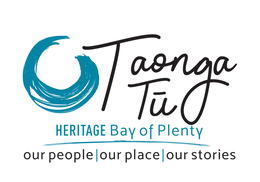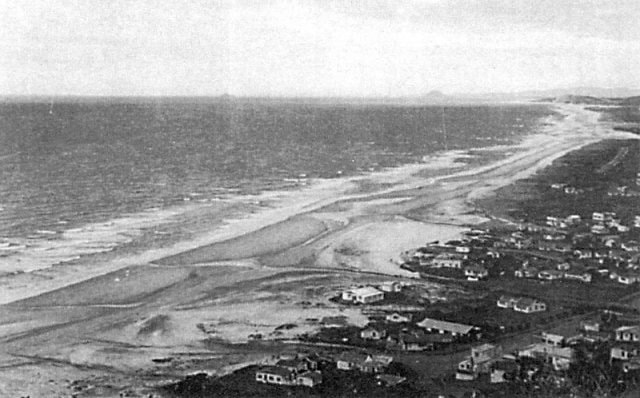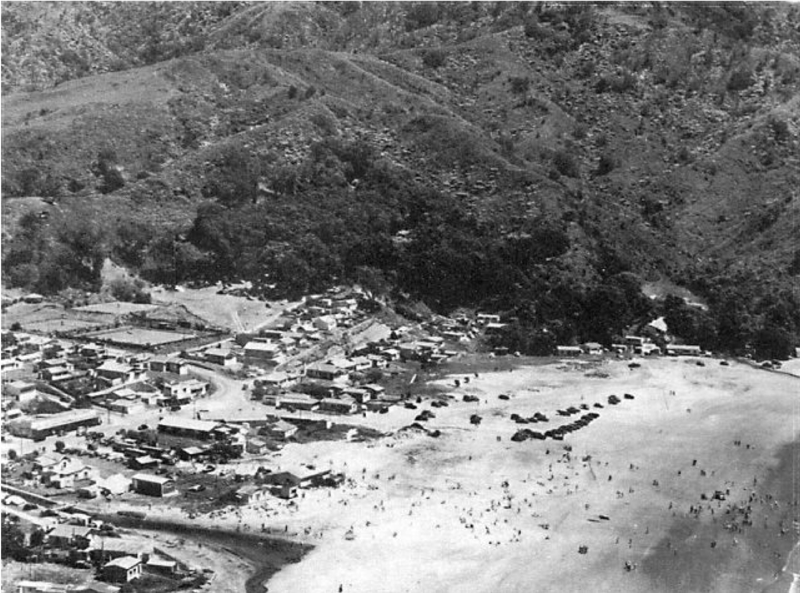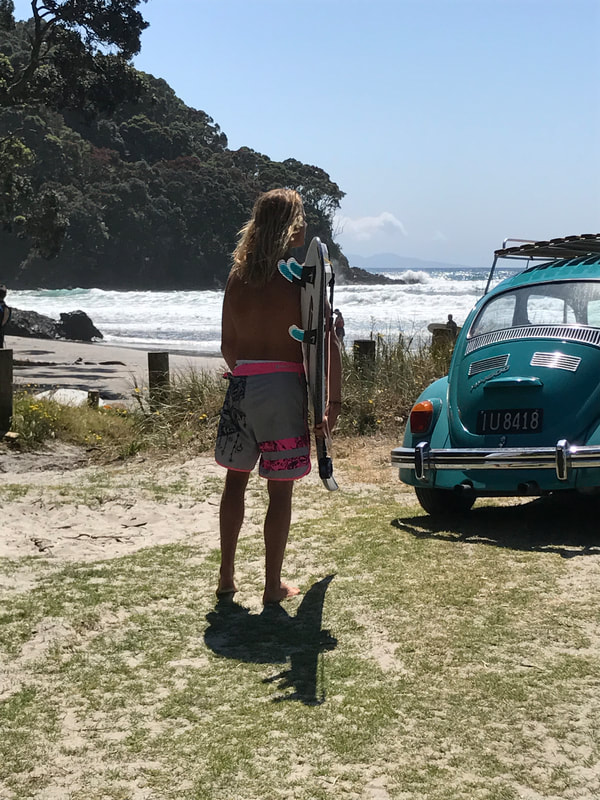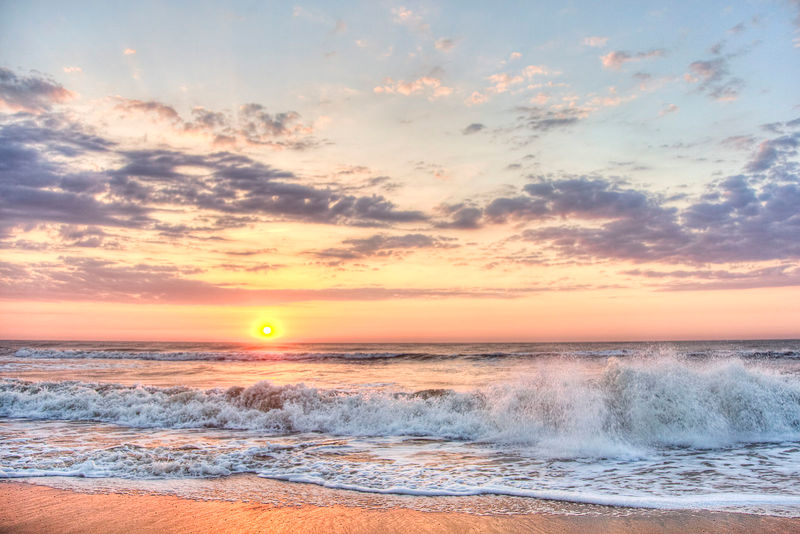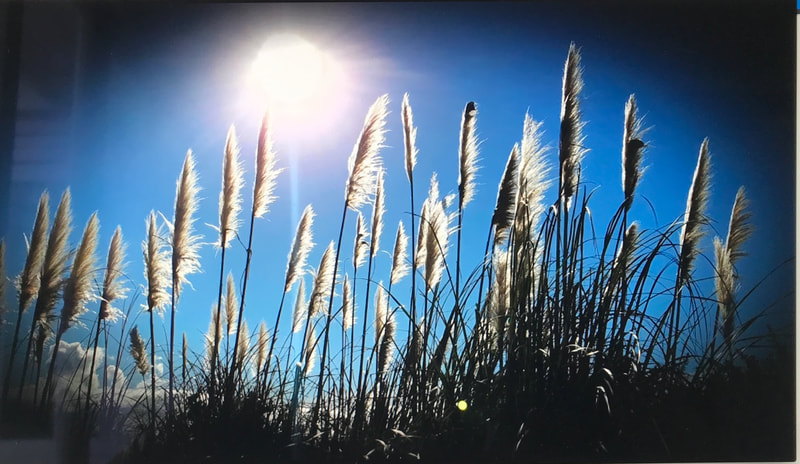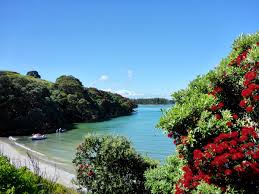'Titiro whakamuri, kōkiri whakamura'
'When you understand the past, you know your future'
'When you understand the past, you know your future'
Early Waihi Beach & Orakawa Bay
History of Waihi Beach
Māori legend tells us that a Māori travelling down the Bay came over a bluff on to a beach and scooped a hole in the bed of a low creek to get a drink, and when the water rose in the hole, he got a hollow reed to suck it up and called the stream "Waihi" (rising water). The beach then became known as Waihi Beach and many people have the mistaken idea that it was named after the mining town that is situated 6 miles west of it, but old maps show clearly that the Waihi stream is the one that flows through the camping area at the beach. Perhaps the townspeople later borrowed the name.
Māori legend tells us that a Māori travelling down the Bay came over a bluff on to a beach and scooped a hole in the bed of a low creek to get a drink, and when the water rose in the hole, he got a hollow reed to suck it up and called the stream "Waihi" (rising water). The beach then became known as Waihi Beach and many people have the mistaken idea that it was named after the mining town that is situated 6 miles west of it, but old maps show clearly that the Waihi stream is the one that flows through the camping area at the beach. Perhaps the townspeople later borrowed the name.
Gold at the beach
However, gold was out there too. Early mining reports tell that Sir James Hooton visited the beach in 1870 and he panned gold in small quantities from the Waihi stream, the Orakawa stream and Fraser's creek which flows onto Homunga. He also found traces of cinnabar at Homunga.
Early European landowners were George Vesey Stewart and then James Shaw. There were gold mines sunk in the hills at the northern headland but they were not successful. In 1941 Mrs Shaw generously donated her northern property as a domain which is now the lovely Orakawa reserve.
Once the only access to Waihi Beach was over the shallow estuary at Athenree - for many years known as Athenree Ford.
History Bowentown, Athenree, Kauri Point, Waihi Beach
Archaeological Assessment - Western Bay of Plenty District Council
This Western Bay of Plenty District Council's Report by MishMish Productions assists with historic and
archaeologic knowledge of this area.
However, gold was out there too. Early mining reports tell that Sir James Hooton visited the beach in 1870 and he panned gold in small quantities from the Waihi stream, the Orakawa stream and Fraser's creek which flows onto Homunga. He also found traces of cinnabar at Homunga.
Early European landowners were George Vesey Stewart and then James Shaw. There were gold mines sunk in the hills at the northern headland but they were not successful. In 1941 Mrs Shaw generously donated her northern property as a domain which is now the lovely Orakawa reserve.
Once the only access to Waihi Beach was over the shallow estuary at Athenree - for many years known as Athenree Ford.
History Bowentown, Athenree, Kauri Point, Waihi Beach
Archaeological Assessment - Western Bay of Plenty District Council
This Western Bay of Plenty District Council's Report by MishMish Productions assists with historic and
archaeologic knowledge of this area.
Waihi Beach & Orakawa Bay today
Waihi Beach today, just forty-five minutes drive from Tauranga, is fast becoming a laid-back mecca for surfers, families and holidaymakers alike, not unlike Mt Maunganui in the 70s and 80s.
Photograph Acknowledgement: Pinterest, C R Brown, Wikimedia, Tripadvisor
Bowentown
History of Bowentown
Katikati is originally the name for where Bowentown is today. Bowentown means “nibbling” and there are differing legends how that name came into being (Sir George Bowen was an early governor of New Zealand). Like Mt Maunganui, Bowentown was once a volcanic Island. The joining of these two to the mainland by sand ('Tombolos') along with the Matakana sand-spit formed the Tauranga harbour. This area was fought over by several tribes through many generations, two of the tribes being Ngāi Te Rangi from Matakana and Ngāti Maru of Paeroa. There are remains of fortified pās on several hills and headlands.
Illegal baches were situated where the Bowentown Domain is at Anzac Bay until 1957. Transport to this popular site was along the beach at low tide.
The telegraph wires from Auckland to Wellington in the 1850s, 60s and 70s passed along here. At Bowentown there was a boarding house, store, stables and telegraph White Terraces office. Tourists came through this way from Auckland by boat and horse to visit Rotorua and the nearby Pink & White Terraces.
Katikati is originally the name for where Bowentown is today. Bowentown means “nibbling” and there are differing legends how that name came into being (Sir George Bowen was an early governor of New Zealand). Like Mt Maunganui, Bowentown was once a volcanic Island. The joining of these two to the mainland by sand ('Tombolos') along with the Matakana sand-spit formed the Tauranga harbour. This area was fought over by several tribes through many generations, two of the tribes being Ngāi Te Rangi from Matakana and Ngāti Maru of Paeroa. There are remains of fortified pās on several hills and headlands.
Illegal baches were situated where the Bowentown Domain is at Anzac Bay until 1957. Transport to this popular site was along the beach at low tide.
The telegraph wires from Auckland to Wellington in the 1850s, 60s and 70s passed along here. At Bowentown there was a boarding house, store, stables and telegraph White Terraces office. Tourists came through this way from Auckland by boat and horse to visit Rotorua and the nearby Pink & White Terraces.
Bowentown Pā site & Bowentown today
Bowentown today is a sought-after holiday destination for families with young children - wonderful safe swimming, but close enough to Waihi Beach and a fifteen minute drive from Katikati and the Western Bay Museum - a place that is a must-visit when staying in the area.
Bowentown today is a sought-after holiday destination for families with young children - wonderful safe swimming, but close enough to Waihi Beach and a fifteen minute drive from Katikati and the Western Bay Museum - a place that is a must-visit when staying in the area.
Photograph Acknowledgement: Bryce England
Photograph acknowledgement: Waihi Beach 1940s, Ohinemuri.org, Mario Vehulst, Tripadvisor, Pinterest, C R Brown, Wikimedia
Content acknowledgement: Ohinemuri.org, Western Bay of Plenty Museum
Content acknowledgement: Ohinemuri.org, Western Bay of Plenty Museum
HOME
ABOUT: Our Team | Ōtamataha Pā | Taonga - our treasure | Our brand story
WHATS ON: Exhibitions | Past Events | Videos
DISCOVER: Our Tāngata whenua | Early Tauranga | Waihi Beach | Katikati | Mauao - the legend | The Kaituna | Te Puke | Maketu - magic
OUR HERITAGE: Heritage Collection | Heritage Gallery | Battles of Gate Pā & Te Ranga | The Apology | St George's Gate Pā | The Elms |
Historical Society | Tauranga Jazz Festival History | Maori Proverbs | Heritage Organisations | Archives | The Golden Years
HERITAGE FRIENDS
CONTACT
ABOUT: Our Team | Ōtamataha Pā | Taonga - our treasure | Our brand story
WHATS ON: Exhibitions | Past Events | Videos
DISCOVER: Our Tāngata whenua | Early Tauranga | Waihi Beach | Katikati | Mauao - the legend | The Kaituna | Te Puke | Maketu - magic
OUR HERITAGE: Heritage Collection | Heritage Gallery | Battles of Gate Pā & Te Ranga | The Apology | St George's Gate Pā | The Elms |
Historical Society | Tauranga Jazz Festival History | Maori Proverbs | Heritage Organisations | Archives | The Golden Years
HERITAGE FRIENDS
CONTACT
Content Copyright Organic Living Ltd © 2022
